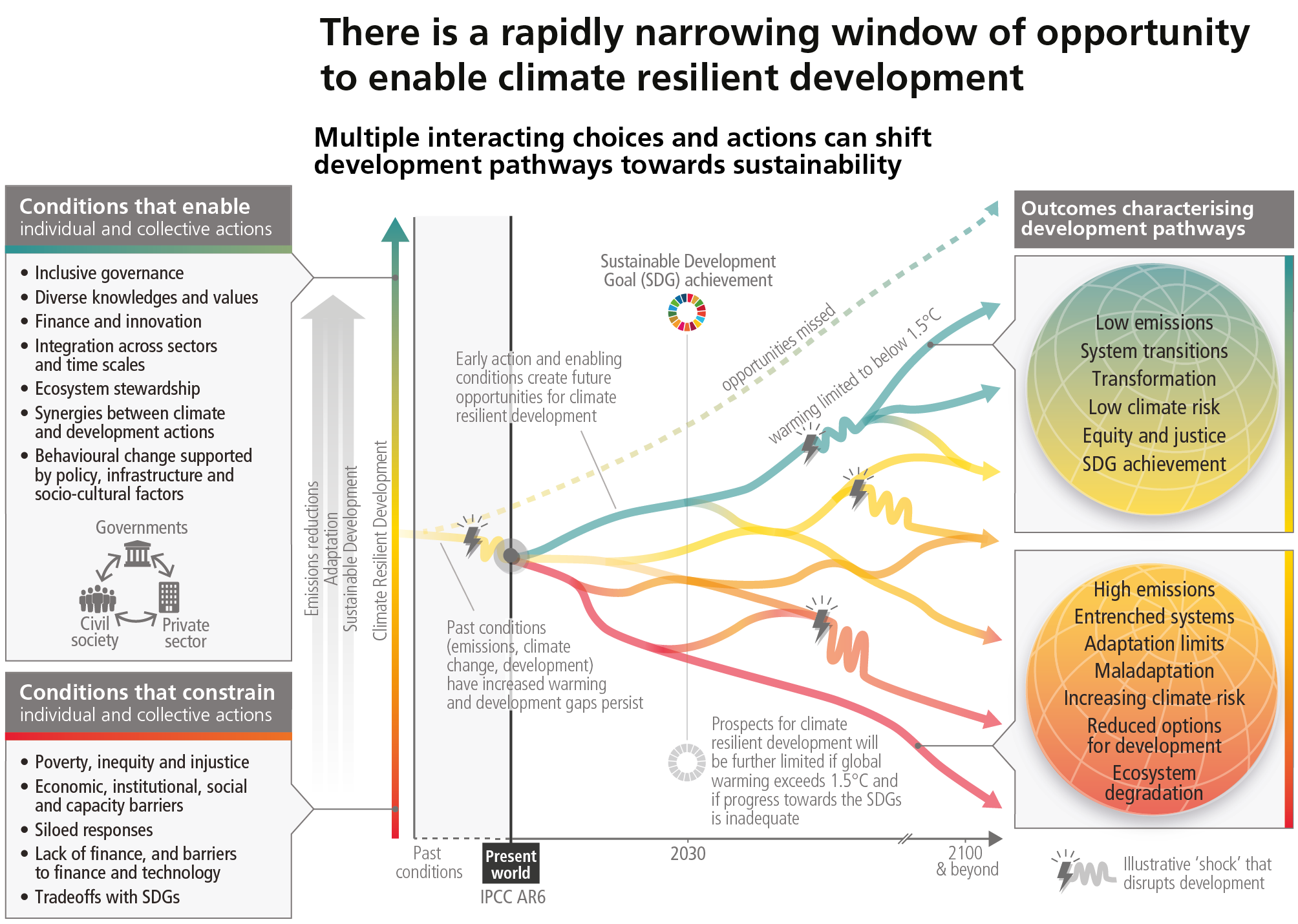Figure 4.2
Figure caption
Figure 4.2: The illustrative development pathways (red to green) and associated outcomes (right panel) show that there is a rapidly narrowing window of opportunity to secure a liveable and sustainable future for all. Climate resilient development is the process of implementing greenhouse gas mitigation and adaptation measures to support sustainable development. Diverging pathways illustrate that interacting choices and actions made by diverse government, private sector and civil society actors can advance climate resilient development, shift pathways towards sustainability, and enable lower emissions and adaptation. Diverse knowledges and values include cultural values, Indigenous Knowledge, local knowledge, and scientific knowledge. Climatic and non-climatic events, such as droughts, floods or pandemics, pose more severe shocks to pathways with lower climate resilient development (red to yellow) than to pathways with higher climate resilient development (green). There are limits to adaptation and adaptive capacity for some human and natural systems at global warming of 1.5°C, and with every increment of warming, losses and damages will increase. The development pathways taken by countries at all stages of economic development impact GHG emissions and hence shape mitigation challenges and opportunities, which vary across countries and regions. Pathways and opportunities for action are shaped by previous actions (or inactions and opportunities missed, dashed pathway), and enabling and constraining conditions (left panel), and take place in the context of climate risks, adaptation limits and development gaps. The longer emissions reductions are delayed, the fewer effective adaptation options. {WGI SPM B.1, WGII SPM B.1-B.5, WGII SPM C.2-5, WGII SPM D.1-5, WGII Figure SPM.3; WGII Figure SPM.4, WGII Figure SPM.5; WGII TS.D.5, WGII Chapter 3.1, WGII Chapter 3.2, WGII Chapter 3.4; WGII Chapter 4.2, WGII Figure 4.4, WGII Chapter 4.5, WGII Chapter 4.6, WGII Chapter 4.9, WGIII SPM A, WGIII SPM B1, WGIII SPM B.3, WGIII SPM B.6, WGIII SPM C.4, WGIII SPM D1-3, WGIII SPM E.1, WGIII SPM E.2, WGIII SPM E.4, WGIII SPM E.5, WGIII FigureTS.1, TS.7, Box TS. 3, Box TS.8, Cross-Working Group Box 1, WGIII Cross-Chapter Box 5 in Chapter 4, SR1.5 SPM D1-6, SRCCL SPM D.3}
